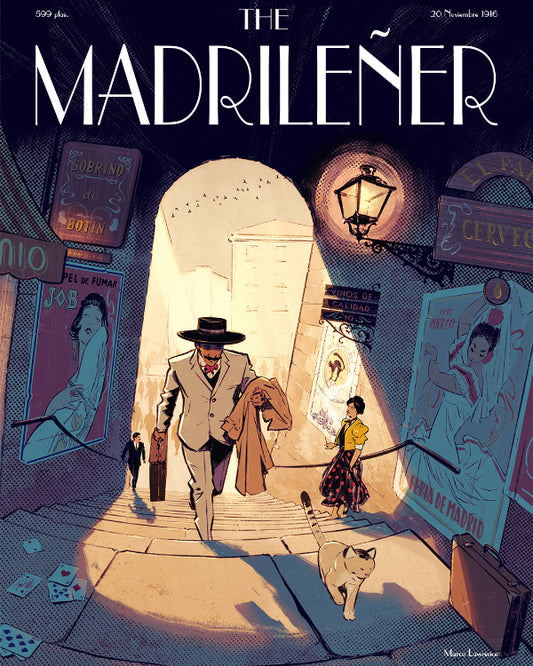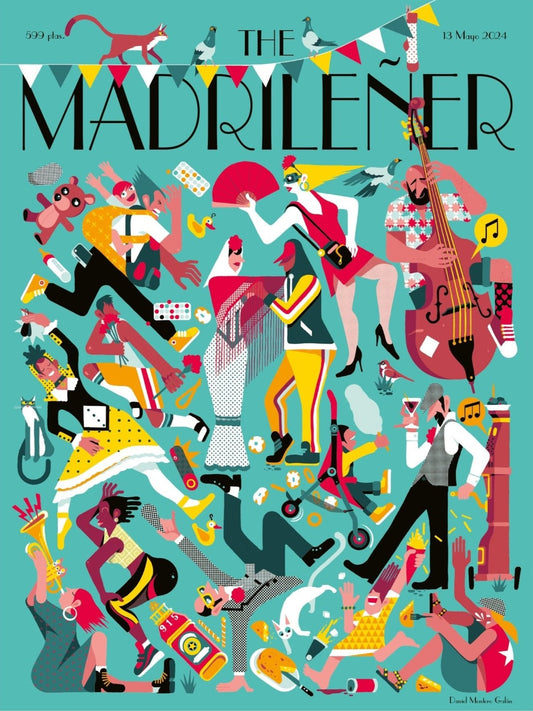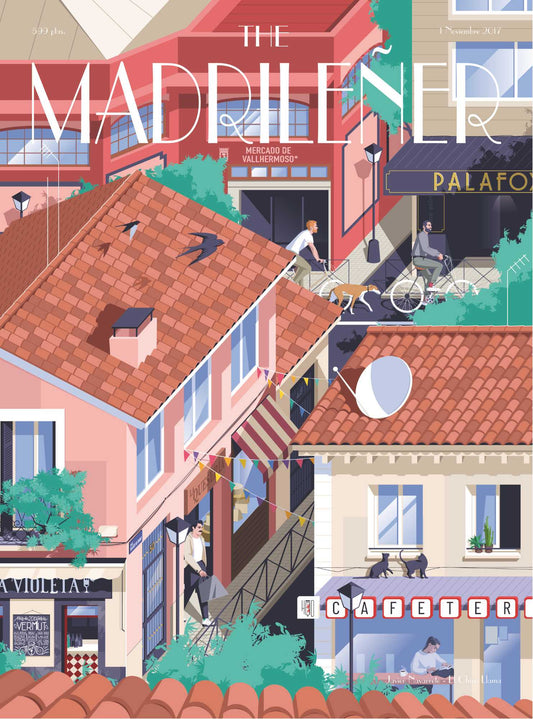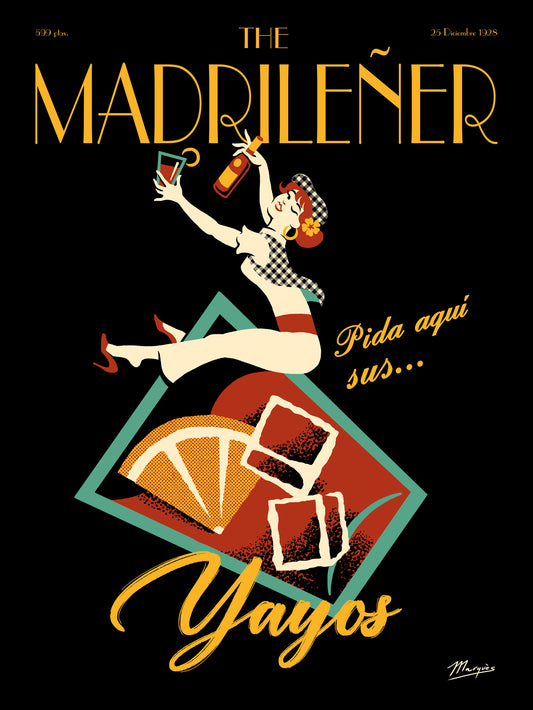Malasaña: where the everyday becomes Art

When you think of Malasaña , the first thing that comes to mind is its vibrant energy and that bohemian air that has transformed the neighborhood into a cultural and social icon of Madrid. Walking through its streets is like entering a living canvas, where every corner tells a story, and its inhabitants seem to be part of a collective work of art. In this neighborhood, the everyday becomes an artistic expression , and its essence lies in the diversity of people who inhabit it and who make Malasaña a unique place.
Over the years, Malasaña has evolved , but it has always maintained its rebellious and creative spirit. It is a place where daily life is transformed into art and where every interaction, every small gesture, contributes to the creation of an atmosphere that distinguishes it from any other corner of Madrid.
The History and Evolution of Malasaña: A Neighborhood That Reinvents Itself
Malasaña is a silent witness to some of the most important moments in the city's history. The Plaza del Dos de Mayo , located in the heart of the neighbourhood, is not only a meeting place today, but was also the scene of resistance during the Napoleonic occupation in 1808. At that time, the inhabitants of the neighbourhood faced French troops in one of the most emblematic battles in the history of Spain. Throughout the centuries, Malasaña has been a symbol of struggle and resistance, values that can still be felt in its streets today.
In the 1980s, the neighbourhood experienced a new stage of transformation with the arrival of the Movida Madrileña , a countercultural movement that emerged after Franco's death. Malasaña was one of the main epicentres of this phenomenon, which forever changed Spanish culture. The streets of the neighbourhood were filled with musicians, artists and young people looking for a way to express themselves freely. Bars and clubs became spaces of creativity where bands and new forms of art were born. Today, although the neighbourhood has experienced a certain process of gentrification, the rebellious and alternative spirit of the Movida is still alive, reflected in the graffiti on its walls and in the vibrant nightlife.
As the neighbourhood has evolved, it has also adapted to modern times. Malasaña is a place where the old and the new coexist in perfect harmony. The facades of historic buildings are interspersed with designer shops, cafés and contemporary art galleries. This contrast is precisely what makes the neighbourhood continue to be a magnet for artists and creatives looking for a place where they can express themselves without restrictions.
The diversity of its inhabitants: the heart of Malasaña
Malasaña would not be what it is without the diversity of the people who live there. The true soul of the neighbourhood lies in its people , who are as varied as the stories told in its streets. Malasaña has always been a refuge for bohemians and artists who find inspiration for their work in this corner of Madrid. It is common to see musicians playing on street corners, painters working in small workshops or writers looking for the perfect space in cafés to express their ideas.
However, Malasaña is not just a neighbourhood of young creatives. It is also home to lifelong residents, those who have lived in the neighbourhood for decades and who, despite the changes, remain part of its identity. Older ladies who go to the market, neighbours who know each other by name and the owners of small local shops are part of what keeps Malasaña connected to its roots.
In recent years, Malasaña has also attracted a growing community of expats and digital nomads who have chosen Madrid as their home. These new inhabitants have brought cultural influences that have fused with the traditional essence of the neighborhood. The mix of locals, expats, young artists and lifelong residents has made Malasaña a microcosm of the diversity that characterizes Madrid.
The everyday as a form of art: art in the streets of Malasaña
What sets Malasaña apart from other neighborhoods is how its daily life has become an art form. Rather than iconic monuments or grand buildings, what makes Malasaña special is how the small daily interactions and characters that inhabit it add to the neighborhood’s unique atmosphere. On every walk, one encounters people who seem to have stepped out of a novel or a movie, each contributing to Malasaña’s ongoing narrative.
Street art also plays a fundamental role in the visual identity of the neighbourhood. Malasaña’s walls are canvases where artists express their creativity, turning every street into an open-air gallery. The graffiti and murals that adorn its streets not only beautify the urban space, but also tell stories, convey political and social messages, and reflect the changing nature of the neighbourhood. Walking through Malasaña is, in many ways, an artistic experience in itself, where street art transforms the ordinary into something extraordinary.
But it's not just the walls that tell stories. Malasaña's cafés and bars are true cultural centres where daily life becomes a form of art. These spaces are not just meeting places, but stages where poetry readings, small exhibitions and intimate concerts are held. Sitting on one of these terraces is like watching the neighbourhood take its course, and often, being part of a creative conversation or witnessing an improvised performance.
Iconic Places: The Art of Everyday Life
Some places in Malasaña perfectly encapsulate its artistic and cultural essence. Plaza del Dos de Mayo is, without a doubt, the heart of the neighborhood. It is a meeting point where locals and visitors gather to enjoy a coffee or simply to chat while observing the hustle and bustle that characterizes this area. Throughout the day, the square is filled with life, and at any time it is possible to come across a street performance or a small gathering among friends.
Another iconic spot is Café Manuela, one of the oldest cafés in the neighborhood, where generations of artists and writers have found a space to be inspired. Its walls are steeped in history and its bohemian atmosphere makes it an ideal place for those looking for a quiet afternoon in an environment full of culture.
The streets of Malasaña are also known for their street art. Streets such as Calle de la Palma and Calle Pez are filled with constantly changing murals, always offering something new to discover. The murals not only beautify the urban landscape, but also function as a form of dialogue between the artists and the inhabitants of the neighbourhood.
“Where's Ave Félix?”: Capturing the essence of Malasaña
One of the clearest examples of how art can capture the daily life of a neighborhood is the illustration “ Where's Ave Félix? ” . This work is not only a visual representation of the chaos and energy that define Malasaña, but also a tribute to the people and places that give it life. The illustration invites the viewer to get lost in the details and discover small nods to the culture and life of the neighborhood. Among the characters that appear, the author himself hides, a visual metaphor of how in Malasaña, everyone contributes to collective art.
The work also includes references to iconic places such as Antonia's Pizzeria and characters that are part of the local imagination, such as the heavy metal band from Gran Vía or a soldier from 1808. Every detail is a reflection of the diversity and dynamism of Malasaña, and the work as a whole is a celebration of the daily life of the neighbourhood.
Malasaña: a cultural meeting point that continues to evolve
Despite the changes that Madrid has undergone in recent decades, Malasaña has managed to remain faithful to its identity as an open and constantly evolving cultural space. The local community remains the heart of the neighbourhood, and although tourism and modernisation have brought changes, the essence of Malasaña remains intact.
The balance between tradition and modernity is what keeps Malasaña attractive to locals and visitors alike. It is a neighbourhood where the old and the new co-exist, where subcultures flourish and where everyone can find their place. In Malasaña, the everyday becomes art, and every day is an opportunity to discover something new.
In short, Malasaña remains a cultural reference point in Madrid, a place where people, spaces and daily experiences are part of a living and constantly changing work of art.








